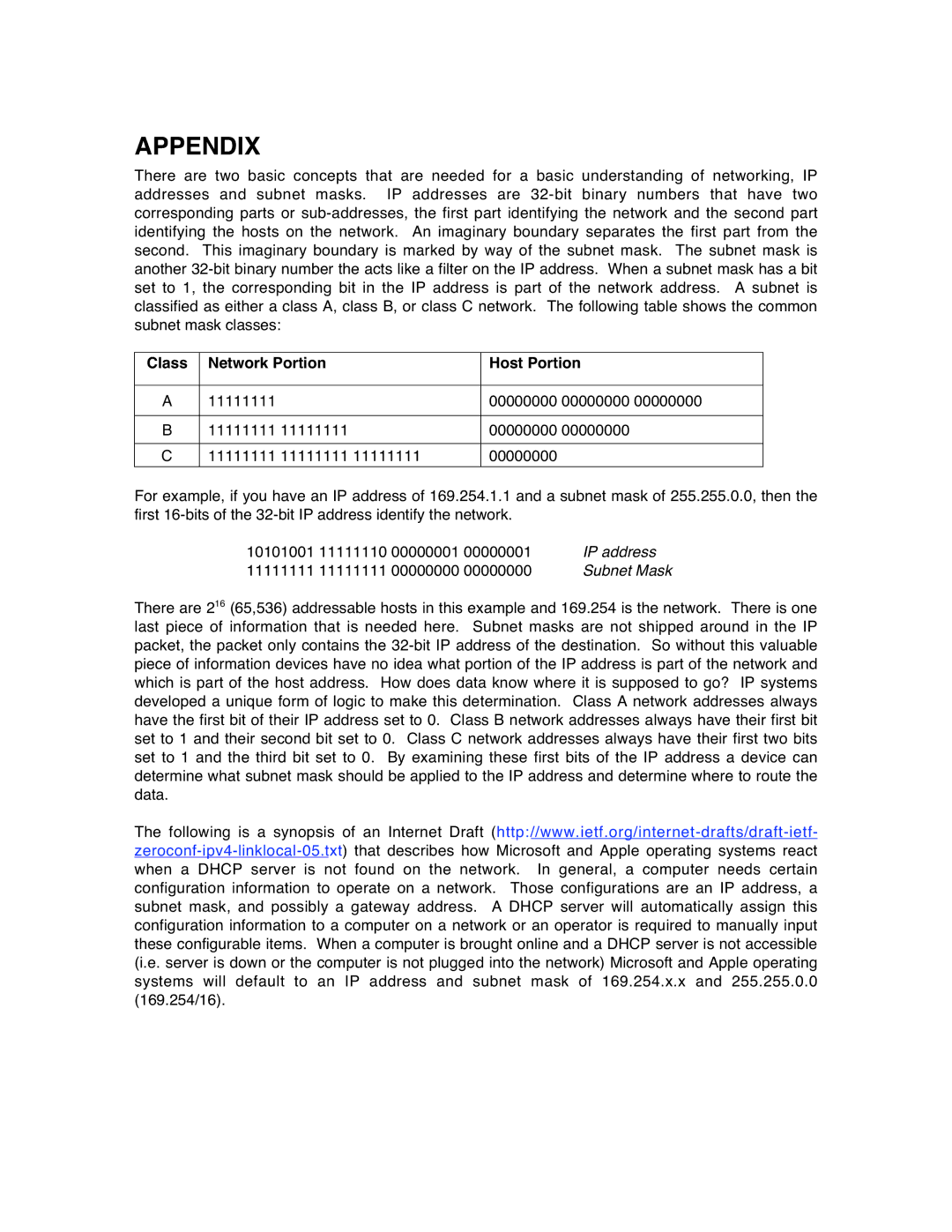APPENDIX
There are two basic concepts that are needed for a basic understanding of networking, IP addresses and subnet masks. IP addresses are 32-bit binary numbers that have two corresponding parts or sub-addresses, the first part identifying the network and the second part identifying the hosts on the network. An imaginary boundary separates the first part from the second. This imaginary boundary is marked by way of the subnet mask. The subnet mask is another 32-bit binary number the acts like a filter on the IP address. When a subnet mask has a bit set to 1, the corresponding bit in the IP address is part of the network address. A subnet is classified as either a class A, class B, or class C network. The following table shows the common subnet mask classes:
Class | Network Portion | Host Portion |
| | |
A | 11111111 | 00000000 00000000 00000000 |
| | |
B | 11111111 11111111 | 00000000 00000000 |
| | |
C | 11111111 11111111 11111111 | 00000000 |
| | |
For example, if you have an IP address of 169.254.1.1 and a subnet mask of 255.255.0.0, then the first 16-bits of the 32-bit IP address identify the network.
10101001 11111110 00000001 00000001 | IP address |
11111111 11111111 00000000 00000000 | Subnet Mask |
There are 216 (65,536) addressable hosts in this example and 169.254 is the network. There is one last piece of information that is needed here. Subnet masks are not shipped around in the IP packet, the packet only contains the 32-bit IP address of the destination. So without this valuable piece of information devices have no idea what portion of the IP address is part of the network and which is part of the host address. How does data know where it is supposed to go? IP systems developed a unique form of logic to make this determination. Class A network addresses always have the first bit of their IP address set to 0. Class B network addresses always have their first bit set to 1 and their second bit set to 0. Class C network addresses always have their first two bits set to 1 and the third bit set to 0. By examining these first bits of the IP address a device can determine what subnet mask should be applied to the IP address and determine where to route the data.
The following is a synopsis of an Internet Draft (http://www.ietf.org/internet-drafts/draft-ietf-zeroconf-ipv4-linklocal-05.txt) that describes how Microsoft and Apple operating systems react when a DHCP server is not found on the network. In general, a computer needs certain configuration information to operate on a network. Those configurations are an IP address, a subnet mask, and possibly a gateway address. A DHCP server will automatically assign this configuration information to a computer on a network or an operator is required to manually input these configurable items. When a computer is brought online and a DHCP server is not accessible (i.e. server is down or the computer is not plugged into the network) Microsoft and Apple operating systems will default to an IP address and subnet mask of 169.254.x.x and 255.255.0.0 (169.254/16).
